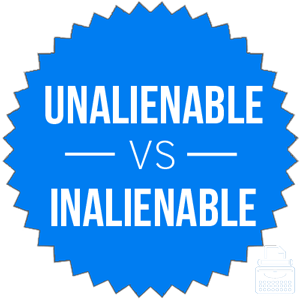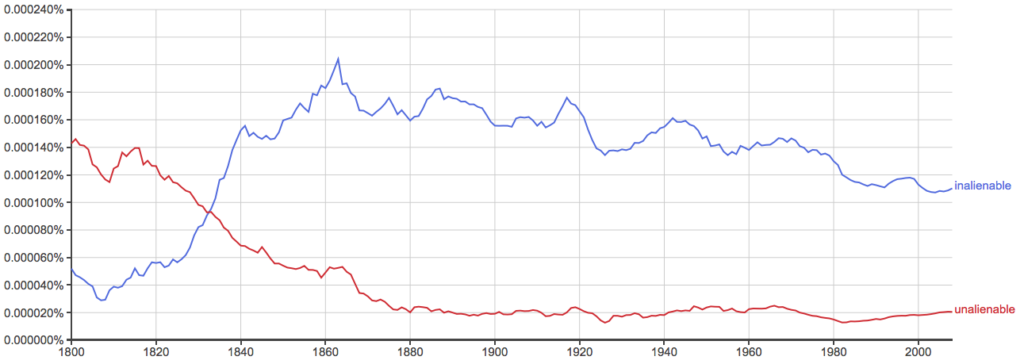As historical documents go, the United States Declaration of Independence is fairly accessible. It is written in a language that is still widely spoken (unlike many texts in Latin and Classical Greek) and, at less than 300 years old, it is still relevant to modern events.
One word may cause some readers to pause, though. The word unalienable (as in unalienable rights) may seem out of place to modern speakers. Isn’t the word inalienable? How could a typo slip into such an important document?
What is the Difference Between Unalienable and Inalienable?
In this post, I will compare unalienable vs. inalienable and use each of these words in at least one example sentence. This way, you will be able to see the words in their proper context.
Plus, I will show you a helpful memory tool that will make choosing either unalienable or inalienable much easier in your own writing.
When to Use Inalienable
 What does inalienable mean? Inalienable is a negation of the adjective alienable. Inalienable means unable to be taken away.
What does inalienable mean? Inalienable is a negation of the adjective alienable. Inalienable means unable to be taken away.
Most of the time, English speakers use this word when referring to rights. Examples of rights that cannot be taken away in America are the right to free speech, the right to freedom of religion, and the right to bear arms.
Here are some more examples of inalienable in sentences,
- “You can’t arrest me; I’m exercising my inalienable rights!” screamed the protester.
- Some rights are not inalienable; they can be taken away under a variety of circumstances to protect public welfare.
Inalienable has roots in Latin and made its way to English via French. It was first used in English in the 17th century.
When to Use Unalienable
 What does unalienable mean? Unalienable is a variation of the same word. It means the same thing and can be used in all of the same contexts. In fact, this is the version of the word that made its way into the United States Declaration of Independence.
What does unalienable mean? Unalienable is a variation of the same word. It means the same thing and can be used in all of the same contexts. In fact, this is the version of the word that made its way into the United States Declaration of Independence.
Today, though, inalienable is actually the preferred version. Most people use unalienable only when quoting or referring to the Declaration of Independence.
This chart shows the relative usage of unalienable vs. inalienable in English since 1700,

As you can see, unalienable dominated during the time Thomas Jefferson wrote the Declaration of Independence. Since the 1830s, however, most writers use inalienable outside of direct quotations from the Declaration.
As Bryan Garner states in his book Garner’s Modern English Usage,
- [Inalienable] is slightly better formed, with a Latinate prefix as well as suffix…inalienable is preferable in all context except those where the Declaration of Independence is directly quoted or cited.
Trick to Remember the Difference
Today, inalienable is the preferred spelling of this word. The prefix in- is a Latin negation, while un- is an English form. Inalienable is therefore closer to the word’s roots in Latin.
Unalienable is appropriate when quoting the Declaration of Independence, but inalienable is a better choice in most other contexts. Since the prefix in- forms the last two letters of the word Latin, and inalienable comes from Latin, it’s easy to remember which version of the word to use.
Summary
Is it inalienable or unalienable? Inalienable is an adjective that means unable to be taken away. Unalienable is an alternate spelling that was used in the American Declaration of Independence.
To summarize,
- Inalienable is the preferred spelling in Modern English.
- Unalienable was the dominant spelling pre-1830s.
Contents
